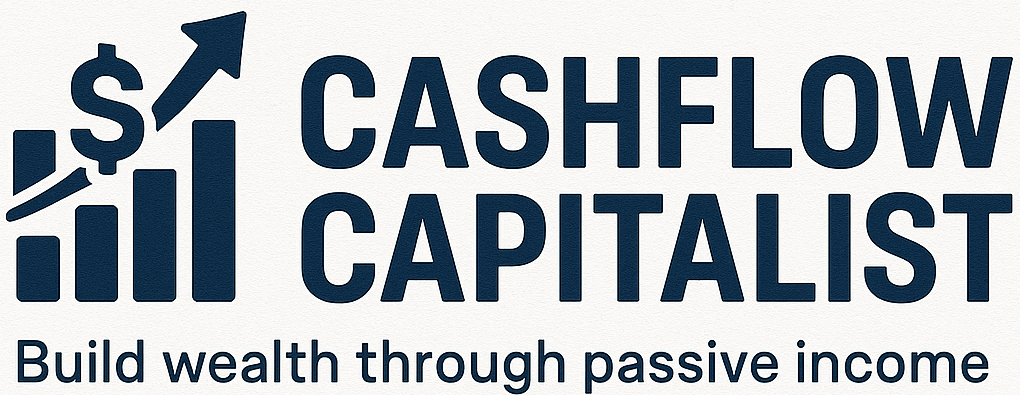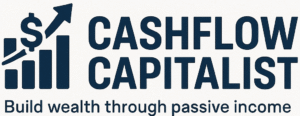What Is Dividend Investing and Why It Works: A Beginner’s Guide to Building Wealth Passively
Want to earn money just by owning stocks? That’s the power of dividend investing. It’s a strategy that gives you steady, passive income as your wealth grows over time.

Looking for early retirement or extra monthly cash? This investment approach is a great tool for building wealth. By investing in companies that pay regular dividends, you can earn income and grow your investments over time.
Key Takeaways
- Earn regular income through dividend-paying stocks.
- Potential for long-term growth in your investments.
- A powerful strategy for achieving financial freedom.
- Helps in building a steady stream of passive income.
- Suitable for those looking to retire early or supplement their income.
Understanding Dividend Investing Fundamentals
To get into dividend investing, you need to know the basics. Dividends are payments from companies to their shareholders. They come from profits and can be cash, stock, or property.
What Are Dividends and How Do They Work?
Companies pay dividends from their earnings, often quarterly or yearly. The dividend yield shows how attractive an investment is. A higher yield means a better chance of profit.
The History and Importance of Dividends in Wealth Building
For centuries, dividends have been key in investing. They offer a steady income and help build wealth over time. Studies show dividend stocks often do better than those without dividends.
Types of Dividends: Regular, Special, and Stock Dividends
There are different kinds of dividends. Regular dividends are ongoing payments. Special dividends are one-time payments. Stock dividends are given in more shares, not cash.

| Type of Dividend | Description | Characteristics |
|---|---|---|
| Regular Dividends | Recurring payments made by companies to their shareholders. | Usually paid quarterly or annually. |
| Special Dividends | One-time payments made by companies, often due to exceptional profits. | Not part of the regular dividend payment schedule. |
| Stock Dividends | Dividends paid in the form of additional shares instead of cash. | Can increase the number of shares held by investors. |
Why Dividend Investing Works for Long-Term Wealth Creation
Dividend investing is great for building wealth over time. It focuses on stocks that pay dividends. This way, your portfolio grows and gives you a steady income.
The Power of Compound Growth Through Reinvestment
Reinvesting dividends is a big plus. It makes your money grow faster. For instance, a dividend reinvestment plan (DRIP) helps you grow your money without extra costs.

Income Stability During Market Volatility
Dividend investing offers stable income, even when markets are shaky. Companies that pay dividends are usually solid and less affected by market ups and downs. This helps you stay on track with your long-term plans.
Building a Passive Income Stream for Financial Independence
Investing in dividend stocks helps you build a passive income stream. As your portfolio grows, so does your income. This can help cover your living costs and reduce your need for other income. It’s a big step towards financial freedom.
In short, dividend investing is a strong way to grow wealth over time. It offers growth, stability, and a steady income. By using these benefits, you can reach your financial goals and secure your future.
How to Identify Quality Dividend Stocks
Finding good dividend stocks is key to a steady income from investing. You need to look at important numbers that show a company’s health and if it can keep paying dividends.
Key Metrics for Evaluating Dividend Stocks
There are a few important numbers to check when looking at dividend stocks. These numbers help us see if a company can keep and grow its dividend payments.
Dividend Yield
The dividend yield shows how much dividend you get for each dollar you invest. A high yield sounds good, but remember to look at the company’s overall health too.
Dividend Payout Ratio
The dividend payout ratio tells you how much of the company’s earnings go to dividends. A good ratio is usually under 60%. If it’s higher, the dividend might be at risk.
Dividend Growth Rate
The dividend growth rate shows how fast a company’s dividend payments are growing. Companies with steady, fast growth in their dividends are often the best choices.
By looking at these key numbers, you can pick the best dividend stocks for your money goals.
Dividend Investing Strategies for Beginners
There are many dividend investing strategies out there. It’s important to find the ones that fit you best as a beginner. Dividend investing can help you grow your wealth over time. But, you need to know the different ways to invest.
Setting Clear Income Goals and Timelines
Before you start investing, set your income goals and timelines. Do you want regular income or long-term growth? Your goals will guide your investment strategy.
Dividend Growth vs. High-Yield Approaches
There are two main strategies: dividend growth and high-yield investing. Dividend growth focuses on stocks with increasing dividend payments. High-yield investing looks for stocks with higher dividend yields. Dividend growth investing aims for long-term growth. High-yield investing offers regular income.
Dollar-Cost Averaging with Dividend Stocks
Dollar-cost averaging means investing a fixed amount regularly, no matter the market. This strategy helps smooth out market ups and downs.
Dividend Reinvestment Plans (DRIPs) Explained
DRIPs let you reinvest dividend payments into more shares. They can help you grow your wealth over time by using compounding.
| Strategy | Description | Benefits |
|---|---|---|
| Dividend Growth | Investing in stocks with a history of increasing dividend payments | Long-term growth, increased income |
| High-Yield | Investing in stocks with higher dividend yields | Regular income, attractive yields |
| Dollar-Cost Averaging | Investing a fixed amount of money at regular intervals | Less market impact, disciplined investing |
| DRIPs | Reinvesting dividend payments into additional shares | Compounding, long-term wealth |
As a beginner, it’s key to understand these strategies. By setting clear goals, choosing the right approach, and using DRIPs, you can build a strong dividend portfolio.
“The stock market is filled with individuals who know the price of everything, but the value of nothing.”
Top Dividend Investment Vehicles
Investors have many ways to invest in dividend-paying companies. Your choice depends on your financial goals, how much risk you can take, and your investment strategy.
Individual Dividend Stocks: Pros and Cons
Investing in individual dividend stocks lets you pick specific companies that fit your goals. The benefits include:
- Potential for high yields from established companies
- Ability to diversify your portfolio by selecting stocks from various sectors
- Control over your investments, allowing you to buy and sell as you see fit
But, there are downsides to consider, such as:
- The need for significant research to select the right stocks
- Higher risk if you invest too heavily in a single stock
Dividend-Focused ETFs and Mutual Funds
Dividend-focused ETFs and mutual funds offer a mix of dividend-paying stocks. They provide:
- Instant diversification, reducing the risk associated with individual stocks
- Professional management, as fund managers actively monitor and adjust the portfolio
Dividend ETFs are traded on an exchange like stocks, making them flexible. Mutual funds are bought and sold at the net asset value at the end of the trading day.
Canadian Dividend Aristocrats and Blue-Chip Options
Canadian dividend aristocrats and blue-chip stocks are known for their stability and consistent dividend payments. These stocks are often from well-established companies with a history of weathering economic downturns.
Monthly Dividend Payers for Regular Income
For investors seeking regular income, monthly dividend payers can provide a steady stream of income. These investments can be attractive for retirees or those looking for predictable returns.
By understanding the different dividend investment vehicles available, you can make informed decisions that align with your financial goals and risk tolerance.
Tax Considerations for Dividend Investors
As a dividend investor, you’re not just concerned with the income you receive, but also how much of it you get to keep after taxes. Understanding the tax implications of dividend investing is key. It helps you maximize your returns and reach your financial goals.
How Dividends Are Taxed in the United States
In the U.S., dividends are taxed as ordinary income. But, qualified dividends are taxed at a lower rate. This rate is usually 15% or 20%, depending on your tax bracket.
To qualify, dividends must come from a U.S. corporation or a qualified foreign corporation. You must also have held the stock for more than 60 days during a specific period.
Canadian Dividend Tax Credits and Considerations
Canada offers a more favorable tax treatment for dividend income. It has a dividend tax credit that reduces the tax on dividend income. This ensures eligible Canadian dividends are taxed lower than ordinary income.
Tax-Efficient Dividend Investing Strategies
To optimize your dividend investing, hold tax-efficient investments in taxable accounts. Place tax-inefficient investments in tax-advantaged accounts. You can also use tax-loss harvesting to offset gains from dividend income.
Using Tax-Advantaged Accounts for Dividend Investments
Using tax-advantaged accounts like TFSAs and RRSPs can greatly enhance your dividend investing strategy. These accounts offer tax benefits. They help your investments grow more efficiently.
Setting Up Your Dividend Portfolio in Tax-Advantaged Accounts
To get the most from your dividend income, using tax-advantaged accounts is key. This approach boosts your returns and makes your dividend investing more effective.
Using TFSAs for Tax-Free Dividend Growth (Canadian Investors)
For Canadians, Tax-Free Savings Accounts (TFSAs) are great for growing dividend investments without taxes. You put in after-tax money, and all the income and gains are tax-free when you take them out.
Maximizing RRSPs for Retirement Dividend Income (Canadian Investors)
Registered Retirement Savings Plans (RRSPs) are also valuable for Canadians. They let you delay taxes until retirement, which can lower your taxes while you’re working.
IRAs and 401(k)s for American Dividend Investors
American investors can benefit from Individual Retirement Accounts (IRAs) and 401(k)s. These accounts offer tax benefits that help your dividend portfolio grow more efficiently.
Balancing Dividend Investments Across Account Types
It’s important to spread your dividend investments across different accounts for better tax efficiency. Think about your financial goals, tax situation, and each account’s features when deciding where to put your investments.
By smartly using tax-advantaged accounts and balancing your investments, you can build a strong dividend portfolio. This portfolio will support your long-term financial goals.
Conclusion: Starting Your Dividend Investing Journey
Dividend investing is a great way to grow your wealth and reach financial freedom. It’s about understanding the basics, finding good dividend stocks, and using smart investment strategies. This way, you can earn steady income without much work.
Starting out in dividend investing might seem hard, but it’s doable. Knowing the basics helps you start your path to financial freedom. It’s good for both new and seasoned investors looking to grow their wealth over time.
To get started, set clear goals for your income and when you want to achieve them. Think about using dollar-cost averaging and dividend reinvestment plans. Also, use tax-advantaged accounts and keep an eye on taxes to boost your earnings and get to financial freedom faster.
Now that you know the basics of dividend investing, it’s time to start. Look for quality dividend stocks and begin your journey to wealth today.
FAQ
What is dividend investing?
Dividend investing means buying stocks that give out a part of their earnings to shareholders. This provides a steady income.
How do dividends work?
Companies pay dividends to their shareholders, usually every quarter or year. The amount is decided by the company’s board.
What are the benefits of dividend investing?
It offers a steady income, can be less volatile than growth stocks, and has the chance for long-term growth.
What is the difference between dividend yield and dividend growth rate?
Dividend yield is the ratio of the annual dividend to the stock’s price. Dividend growth rate is how fast the dividend increases over time.
How do I evaluate dividend-paying stocks?
Look at dividend yield, payout ratio, and growth rate. Also, check the company’s financial health and dividend history.
What is a Dividend Aristocrat?
A Dividend Aristocrat has raised its dividend for at least 25 years. It shows a strong commitment to sharing profits.
How can I start dividend investing?
First, set income goals. Then, choose between dividend growth or high-yield stocks. Use dollar-cost averaging and DRIPs to start.
What are the tax implications of dividend investing?
Dividend income is taxed, but rates vary. Tax-advantaged accounts can help reduce taxes.
Can I live off dividend income?
Yes, but you need a big portfolio and a good strategy to get enough income.
How do I build a dividend portfolio in a tax-efficient manner?
Use tax-advantaged accounts like TFSAs, RRSPs, IRAs, or 401(k)s. Balance your investments across different accounts.
What are some common dividend investing strategies?
Strategies include dividend growth, high-yield, dollar-cost averaging, and DRIPs to reinvest income.
Are dividend-paying stocks less volatile?
Yes, they can be less volatile because dividend income helps during downturns. But, they’re not completely safe.
How do I choose between individual stocks and dividend ETFs?
It depends on your goals, risk tolerance, and diversification needs. Stocks offer control, while ETFs diversify.
What is the role of dividend reinvestment plans (DRIPs)?
DRIPs let you reinvest dividends into more shares. This can grow your portfolio faster over time.




